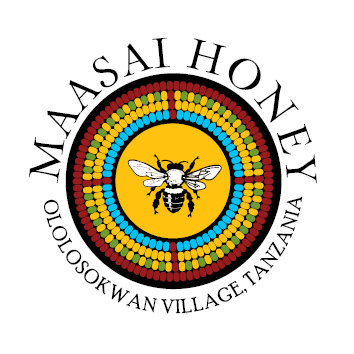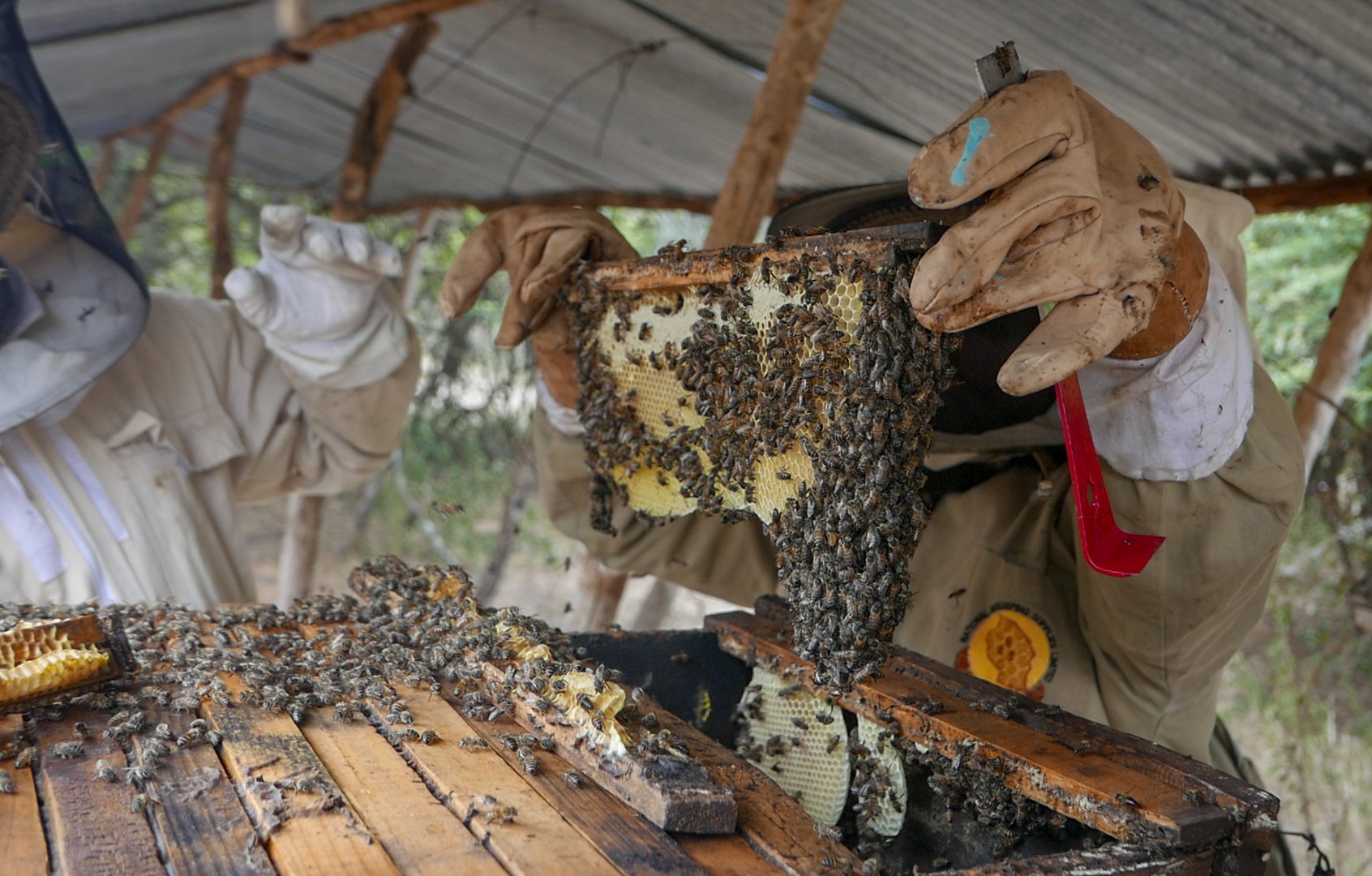Our New Top-Bar Training Center!
We are excited to announce the completion of our top-bar training cage! This structure has been sponsored by the Greenwich World Hunger Association, as part of our educational initiatives in top-bar beekeeping. The bee cage holds 3 top-bar hives, which will be utilized for hand-on trainings with village residents of Ololosokwan. Each hive sits on a hanging hive stand, so that they can be easily opened for demonstrations and practical trainings.
A beekeeping instructor explains to trainees how to use various beekeeping tools such as the bee brush, hive tool, and bee smoker.
Top-bar hives are commonly used in East Africa because they can be hung from trees and are relatively easy to manage. Different from commercial Langstroth hives, which have stackable boxes, the top-bar hive is just one long box, lined with wooden frames. Therefore, the brood cells, pollen storages, plus honeycomb are all present in the same box. Typically, the colony will position itself in the middle of the hive and build honeycomb at each of the ends.
Beekeepers stand with a log hive that sits in a tree.
Beekeepers inspect a frame from a top bar hive.
The other advantage of top-bar hives is that they can replace traditional log hives. These rudimentary hives have long been used for beekeeping in remote areas; however, they are difficult to reuse from season to season and they also contribute to deforestation. On the contrary, top-bar hives can easily be opened and the internal frames make the harvesting process much simpler.
We are excited to embark on our top-bar training program, which will equip more village residents with the skills and equipment for keeping bees at their homes! The resulting honey helps these villagers to generate a sustainable source of income for themselves and their families. At the same time, this network of village beekeepers supports the local, indigenous bee populations!
A big thanks to the Greenwich World Hunger Association for sponsoring this initiative!




